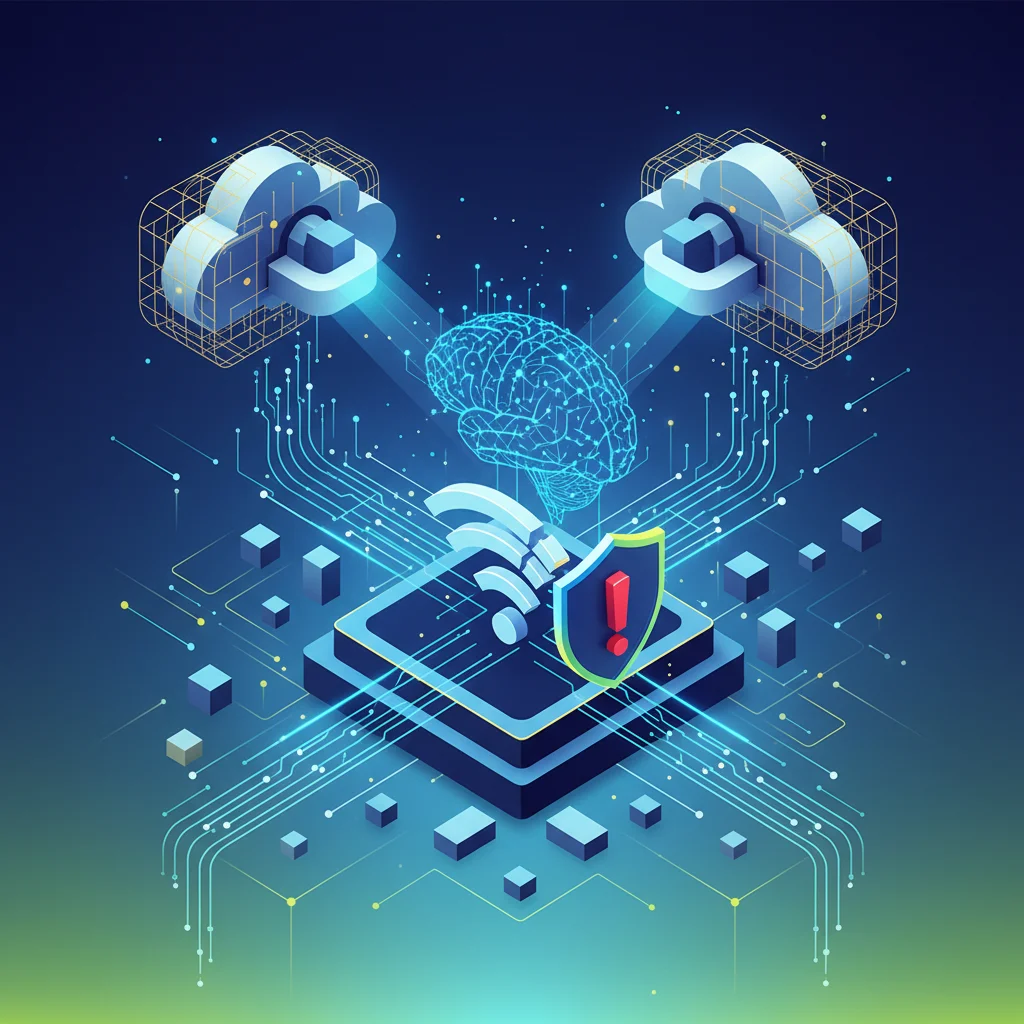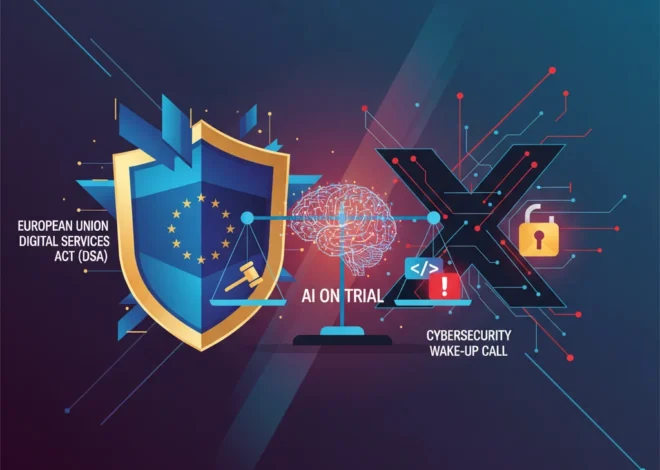
Beyond the Outage: How AI and Cloud Are Fortifying Our Digital Lifelines
That familiar, sinking feeling. The Wi-Fi icon shows a dreaded exclamation mark. Your phone, despite showing full bars, can’t connect to anything. You toggle airplane mode, restart your device, and then the realization dawns: it’s not you, it’s them. For over 130,000 people, this was the reality during a recent Vodafone outage, a stark reminder of how fragile our digital-first world can be. The incident, which impacted a significant portion of Vodafone’s 18 million UK customers, wasn’t just a momentary inconvenience; it was a symptom of a much larger challenge facing all modern technology infrastructure.
While the headlines focus on customer frustration, we’re here to look under the hood. For developers, tech professionals, and entrepreneurs, an event like this is more than just news—it’s a critical case study. It exposes the vulnerabilities in complex systems and, more importantly, highlights the incredible potential of technologies like artificial intelligence, cloud computing, and automation to build a more resilient future. Let’s dissect this outage and explore how cutting-edge innovation is becoming the ultimate defense against digital darkness.
The Anatomy of a Modern Meltdown
When a service with millions of users goes down, the cause is rarely a single, simple mistake. It’s often a “perfect storm” of interconnected issues—a cascading failure where one small crack spreads through the entire foundation. While Vodafone hasn’t detailed the specific root cause, major outages in complex networks typically fall into a few key categories:
- Software Bugs: A new code deployment or patch can introduce unforeseen conflicts. In a distributed system, a seemingly minor bug in a core service can have an exponential, system-wide impact. This is where rigorous CI/CD pipelines and automated testing become non-negotiable parts of modern software development.
- Configuration Errors: The classic “human error.” A mistyped command or a flawed configuration pushed to a central router or server can bring services to a grinding halt. This accounts for a surprisingly high percentage of downtime incidents across the industry.
- Hardware Failure: Despite the move to the cloud, physical hardware—servers, routers, fiber optic cables—still underpins everything. A critical hardware component failing without an adequate failover system can trigger a significant outage.
- Cybersecurity Incidents: A Distributed Denial of Service (DDoS) attack, ransomware, or a malicious actor gaining internal access can be deliberately engineered to cause maximum disruption. Distinguishing a sophisticated attack from a standard operational failure requires advanced monitoring and cybersecurity protocols.
The intricate web of modern infrastructure means these issues are rarely isolated. A software bug might trigger a hardware overload, which then causes a database to fall out of sync, leading to a cascading failure that takes hours to diagnose and resolve. This complexity is precisely why the old, reactive model of “wait for something to break, then fix it” is no longer viable.
The Staggering Cost of Silence
Downtime isn’t just an inconvenience; it’s a massive financial and reputational blow. For a large enterprise, the cost of an outage can be astronomical. According to a 2022 report by the Uptime Institute, the cost of downtime is escalating, with over 60% of outages costing more than $100,000, and a significant portion exceeding millions. While we don’t have specific figures for the Vodafone event, we can understand the multifaceted impact:
- Direct Revenue Loss: Customers unable to make purchases, businesses unable to process transactions, and potential SLA (Service Level Agreement) credit payouts.
- Productivity Collapse: With nearly 1 in 3 UK workers operating on a hybrid model, a home broadband outage paralyzes a significant portion of the workforce. For startups and small businesses that rely on this connectivity, it’s a direct hit to their operations.
- Reputation Damage: In a competitive market, reliability is a key differentiator. A major outage erodes customer trust and can lead to churn. The social media backlash is often swift and unforgiving.
- Operational Overload: The all-hands-on-deck effort to diagnose and fix the issue diverts highly skilled engineers from their primary tasks, like developing new features or driving innovation.
Enter AIOps: The AI-Powered Network Guardian
For decades, network monitoring involved setting static thresholds. If CPU usage went above 90%, an alarm would sound. This approach is hopelessly outdated in today’s dynamic, cloud-based environments. The solution lies in AIOps (AI for IT Operations), a transformative approach that leverages artificial intelligence and machine learning to create smarter, self-healing systems.
Instead of waiting for a system to break, AIOps aims to predict and prevent issues before they impact users. It works by ingesting massive volumes of data—logs, metrics, network traffic, application performance data—and using ML algorithms to:
- Detect Anomalies: A machine learning model can learn the “normal” behavior of a network. It can spot subtle deviations that a human operator would miss, such as a slight increase in latency that precedes a major server failure.
- Correlate Events: When alarms do start firing from different systems, AIOps can cut through the noise. It analyzes and correlates thousands of alerts to identify the single root cause, turning a chaotic “alert storm” into a single, actionable insight.
- Automate Responses: This is where the true power lies. Once a problem is identified, AIOps can trigger automated workflows. For example, it could automatically reroute traffic away from a failing data center, roll back a faulty software update, or scale up resources to handle an unexpected traffic surge—all without human intervention.
To illustrate the difference, consider this comparison between traditional monitoring and an AIOps-driven approach:
| Capability | Traditional Monitoring | AIOps-Powered Approach |
|---|---|---|
| Data Analysis | Siloed data; relies on human-set thresholds. | Aggregates all data sources; uses machine learning to find patterns. |
| Problem Detection | Reactive; alarms fire after a failure has occurred. | Proactive & Predictive; identifies anomalies that signal future failures. |
| Root Cause Analysis | Manual “war rooms”; engineers sift through logs for hours. | Automated correlation; pinpoints the likely root cause in minutes. |
| Remediation | Manual intervention; requires an engineer to execute a fix. | Automation-driven; triggers self-healing scripts and workflows. |
For a telecom giant, implementing AIOps is a game-changer. It transforms network management from a reactive firefighting exercise into a proactive, data-driven science. This isn’t just about preventing outages; it’s about optimizing performance, improving security, and freeing up brilliant engineers to focus on programming the next wave of innovation.
Building for Failure: Lessons for Startups and Innovators
You don’t need to be a multi-billion dollar corporation to learn from this. In fact, startups and agile tech companies are in a prime position to build resilience in from day one. The principles that prevent outages at scale are the same ones that can make a new SaaS product robust and reliable.
- Embrace the Cloud Natively: Don’t just “lift and shift” old architecture to the cloud. Use cloud-native services designed for resilience, such as auto-scaling groups, multi-region deployments, and managed database services. This builds redundancy and fault tolerance into your application’s DNA.
- Automate Everything: From infrastructure provisioning (Infrastructure as Code) to testing and deployment (CI/CD), automation reduces the risk of human error—one of the leading causes of downtime.
- Practice Chaos Engineering: Popularized by Netflix, this is the practice of intentionally injecting failure into your systems to see how they respond. It’s the ultimate stress test and helps you uncover weaknesses before your customers do.
- Prioritize Cybersecurity: A strong cybersecurity posture is not an optional extra. A single vulnerability can lead to a catastrophic outage. As a recent report from IBM highlights, the cost of a data breach continues to rise, making proactive security a critical business investment (source).
The modern tech landscape, powered by accessible cloud platforms and open-source software, has democratized reliability. A small, forward-thinking startup can often build a more resilient system than a legacy giant encumbered by decades of technical debt.
The Unfailing Need for Innovation
The Vodafone outage, like all major tech failures, is a powerful learning opportunity. It serves as a potent reminder that the digital services we depend on are not infallible. They are complex, dynamic systems that require constant vigilance, investment, and—above all—innovation.
The path forward is clear. It involves moving away from reactive, manual processes and embracing a future where AI and automation are at the core of operations. It means building systems on flexible, resilient cloud architectures. And it requires a culture that prioritizes reliability as much as it does new features. For every developer, entrepreneur, and tech leader, the message is the same: the best way to fix an outage is to prevent it from ever happening in the first place.


